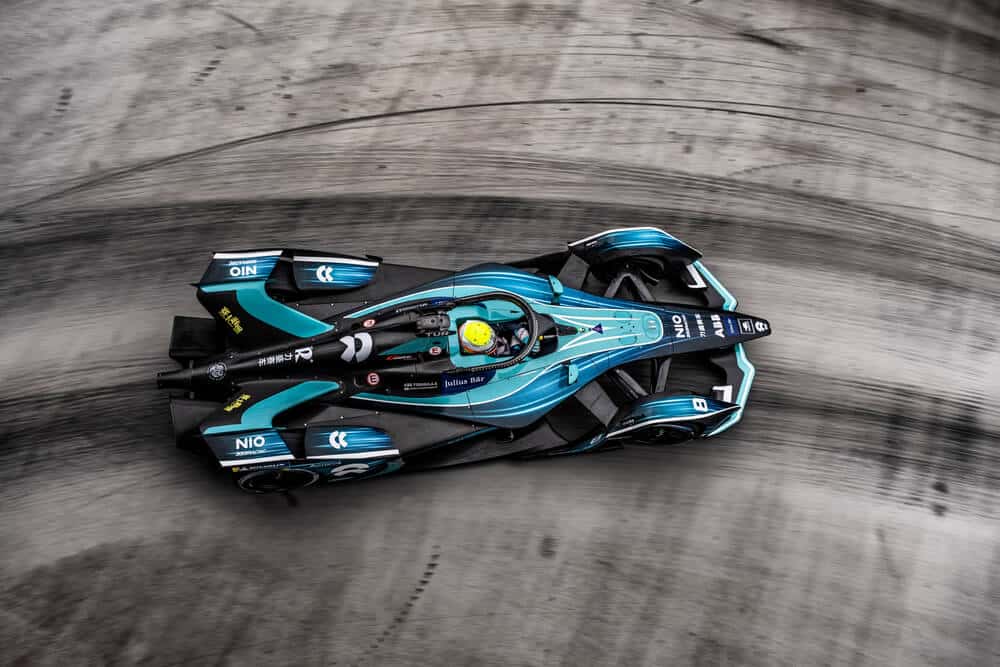Tyre warmers have become a crucial component in modern Formula One racing. These devices are used to preheat the tyres before a race or qualifying session, ensuring maximum grip and performance from the very start.
Without tyre warmers, drivers would have to rely on the heat generated during the out-lap to bring their tyres up to the optimal operating temperature. That can be a challenging task in cooler conditions. Tyre warmers also play a key role in tyre management strategies. It allows teams to carefully control the temperature and pressure of the tyres to achieve the best possible performance and longevity.
However, there are debates about the use of tyre warmers in motorsports due to their environmental impact. Some racing series have banned or restricted their use already. In this article, we’ll explore the benefits and drawbacks of tyre warmers in F1.
Table of Contents
Watch this video to learn more about the potential banning of tyre blankets for the 2024 season.
What are tyre warmers in F1?
Tyre blankets are devices used to preheat the tyres before a race or qualifying session. It ensures maximum grip and performance from the start. In Formula One, tyre warmers consist of electrically heated blankets that are fitted over each tyre.
These blankets are made of a heat-resistant material and are designed to maintain a consistent temperature throughout the entire surface of the tyre. Tyre blankets are used in F1 to help drivers achieve the optimal operating temperature for their tyres. The optimal temperature can vary depending on the compound and track conditions. Teams carefully monitor and control the temperature and pressure of the tyres. The temperature can have a significant impact on performance and strategy during a race.
While tyre blankets have become a standard feature in F1, their use has also been a topic of debate due to concerns about their environmental impact and cost.
Don’t miss our article about the different tyres used in F1.
Key Takeaways
- Tyre blankets are devices used to preheat tyres before a race or qualifying session.
- In Formula One, electrically heated blankets are used as tyre warmers.
- Tyre blankets ensure maximum grip and performance from the start of the race.
- Optimal tyre temperature can vary depending on the compound and track conditions.
- Tyre blankets play a crucial role in tyre management strategies.
- Their use has been a topic of debate due to environmental impact and cost.
- Some racing series have banned or restricted the use of tyre blankets.
- Tyre blankets have become a standard feature in modern Formula One racing.
Benefits of Tyre Warmers
Tyre warmers offer several benefits that contribute to improved performance and competitiveness in Formula One racing. These devices ensure that the tyres are at their optimal operating temperature before the race or qualifying session. It provides drivers with better grip, acceleration, and overall performance.
Improved Performance
Tyre warmers can help improve a driver’s overall performance by ensuring that their tyres are at their optimal operating temperature. Right tyre temperature leads to better grip and control on the track. With tyre blankets, drivers can push their cars to the limit from the start of the race. It can potentially gain an advantage over their competitors.
Improved Tire Grip
One of the most significant benefits of tyre blankets is their ability to improve tyre grip. By preheating the tyres to the correct temperature, tyre blankets allow the rubber to become more pliable. It provides better traction and grip on the track. This increased grip can help drivers maintain control of their cars. Particularly in challenging corners and high-speed sections.
Improved Acceleration
Tyre blankets can also improve a car’s acceleration by ensuring that the tyres have the optimal amount of grip and traction from the start of the race. This allows drivers to apply more power to the wheels without the risk of wheel spin. It usually results in faster acceleration times and better overall performance. By giving drivers an edge in acceleration, tyre blankets can help them gain an advantage over their competitors and potentially win the race.

Drawbacks of Tyre Warmers
While tyre warmers offer significant benefits in Formula One racing, they also have some drawbacks that need to be considered. These drawbacks include increased costs and concerns over whether they are necessary for racing.
Increased Costs
One of the primary drawbacks of tyre warmers is their cost. Tyre warmers can be expensive to purchase, maintain, and transport, adding to the already significant costs of running a Formula One team. Additionally, tyre warmers require electricity to operate, which can increase the energy consumption and carbon footprint of a race event.
Potentially Unnecessary
Some people argue that tyre warmers may be unnecessary for racing. They argue that drivers should be able to manage their tyre temperatures during the out-lap and warm-up lap, which would reduce the need for tyre warmers. Additionally, some racing series have banned or restricted the use of tyre warmers, arguing that they are not necessary and can be detrimental to the environment.
Current Regulations Regarding Tyre Warmers
Formula One has established regulations regarding the use of tyre warmers to ensure fair competition and safety. These regulations dictate the type of tyre warmers allowed, how they can be used, and the responsibilities of drivers in managing their tyre temperatures during a race.
Allowed Tyre Warmer Use
In Formula One, tyre warmers are allowed and are considered to be an essential tool for optimizing tyre performance. However, the regulations specify the type and size of tyre warmers that teams can use. They must also be fitted to the tyres in a specific way, and the temperature of the tyres must be monitored to ensure compliance with the regulations.
There is however plans to ban tyre blankets for the 2024 season according to FIA.
Drivers Must Monitor Tire Temperature
While teams are responsible for fitting and removing the tyre warmers, it is the driver’s responsibility to monitor the tyre temperatures during a race or qualifying session. This is because the optimal operating temperature of the tyres can vary depending on the track conditions and the type of tyre compound used.
Drivers must ensure that the tyre temperatures remain within the allowed range and adjust their driving style accordingly to prevent overheating or underheating of the tyres. Failure to manage tyre temperatures properly can result in reduced grip and performance, potentially leading to accidents and penalties.
Frequently asked questions
What are tyre warmers in Formula One?
What are the benefits of tyre warmers in Formula One?
What are the drawbacks of tyre warmers in Formula One?
Conclusion
In conclusion, tyre warmers have become an essential tool in Formula One racing, allowing teams to optimize tyre performance and improve their chances of success. By preheating the tyres, drivers can achieve better control and handling on the track, leading to improved lap times and faster acceleration. However, while tyre warmers offer significant benefits, they also have some drawbacks, including increased costs and concerns over whether they are necessary for racing. Despite these drawbacks, the regulations regarding tyre warmers in Formula One allow for their use, and it remains an important aspect of the sport. As technology and regulations continue to evolve, it will be interesting to see how tyre warmers continue to play a role in the future of Formula One racing.
Article sources
Learn more about Formula One
Want to learn more about F1? Then visit our Formula 1 glossary and dictionary.



